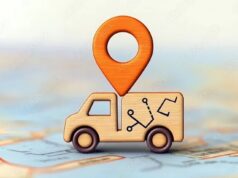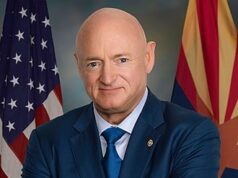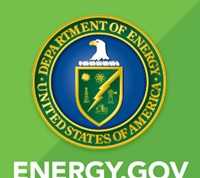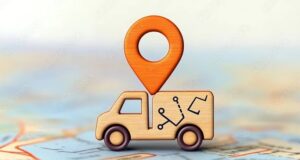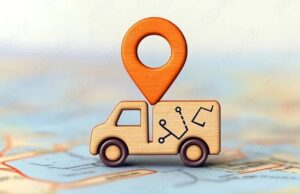Cape Girardeau, MO – RealEstateRama – In the first 10 days since President Biden authorized federal disaster assistance for the state of Missouri, FEMA already has approved $903,720 dollars for 158 eligible individuals and households affected by May 19-27 storms.
This money is in the form of grants that can help pay for eligible, disaster-related costs associated with a temporary place to stay, minimal home repairs and/or other serious needs not covered by insurance or other programs. The grants also can fund the costs of features that can help disabled persons repair or improve accessibility to their houses.
The federal assistance is available for eligible individuals, households and self-employed business owners in 10 Missouri counties: Barry, Butler, Carter, Howell, New Madrid, Ripley, Scott, Shannon, Stoddard and Texas.
Individual Assistance grants do not have to repaid if they are spent for the purpose(s) FEMA intends. Survivors should save receipts for costs associated with these grants for at least three years in case of a random audit.
Here are other recovery milestones in the disaster operation’s first 10 days:
214 housing inspections have been completed for those who reported storm damage to their primary residences. The inspections are a next step once a survivor registers with FEMA to help determine the level of damage and if/how individual and household grants can help.
While FEMA funds can be used for many essential recovery needs, they generally will not pay for all disaster-related expenses a survivor incurs. Many other government and voluntary agencies have resources that can help with those costs too.
A Disaster Recovery Center (DRC) is open in Sikeston at the YMCA located at 511 Taylor St. The center’s hours are: 8 a.m. to 6 p.m., Mon.-Fri., and 8 a.m. to 4 p.m. Saturdays and closed on Sundays. More centers are being planned to service the other disaster-designated counties and will be announced in the coming days and weeks.
A DRC is a one-stop shop for disaster survivors to:
- Talk face-to-face with recovery specialists to ask questions related to their recovery
- Check on the status of their FEMA case
- Get help with applying for a low-interest disaster loan through the U.S. Small Business Administration (SBA)
- Learn about other available recovery resources.
These services are FREE. For those who have low-vision or are deaf/hard of hearing, there are assistance devices at the DRCs to help with accessing resources or filing a FEMA application.
Survivors are encouraged to apply with FEMA before coming to a DRC to make your trip there the most efficient. But individuals who are having difficulty applying can go to a DRC and get help with filing their initial application.
There are three ways to apply for FEMA:
- Online at disasterassistance.gov
- Call 1-800-621-FEMA (3362)
- Download the FEMA App and apply on a mobile device
- Anyone using a relay service, such as video relay service (VRS), captioned telephone service or others, can give FEMA the number for that service. Anyone using a relay service, such as video relay service (VRS), captioned telephone service or others, can give FEMA the number for that service. For an accessible video on three ways to apply for FEMA assistance, visit: https://www.youtube.com/watch?v=LU7wzRjByhI.
Disaster Survivor Assistance (DSA) teams have been canvassing storm-damaged areas talking with survivors, helping them to register for FEMA on mobile devices, answering questions about disaster assistance and providing information on other resources.
To date, the teams have visited 2,232 households and another 144 community locations. DSA team members will always carry an official federal ID. It is not required that you share personal information with these team members. Their visits are a courtesy to survivors. If you suspect someone might not be who they say they are, contact local law enforcement.
Survivors do not have to wait for a team to visit their house to apply. FEMA encourages anyone impacted by the May 19-27 storms to apply directly as soon as possible to start the process.
The U.S. Small Business Administration (SBA) has opened a Business Recovery Center in Sikeston at Southeast Missouri State University so that impacted individuals, households and businesses can meet face-to-face with SBA specialists to discuss possible low-interest disaster loans.
The center is open Mon-Thurs 8 a.m. to 4:30 p.m. and, beginning Aug. 16, on Fridays from 8 a.m. to 12 noon. The center is located on the Sikeston Regional Campus, Room 114, 2401 N. Main St., Sikeston.
Disaster Unemployment Assistance (DUA) has been authorized for persons in the 10 Missouri counties whose employment was lost or interrupted due to May 19-27 severe storms, straight-line winds, tornadoes and flooding.
DUA provides unemployment benefits and re-employment assistance services for up to 35 weeks for survivors who are not eligible for regular state unemployment insurance. For more information about DUA eligibility and/or to file a claim, go online to uinteract.labor.mo.gov. For assistance with filing a claim, call your Regional Claims Center (see below) Monday through Friday, 8 a.m. to 5 p.m.
Regional Claims Centers
Jefferson City……………………573-751-9040
Kansas City………………………816-889-3101
St. Louis …………………………314-340-4950
Springfield ………………………417-895-6851
Outside Local Calling Area ……..800-320-2519
For more disaster-related information, visit the Missouri State Emergency Management Agency online at www.sema.dps.mo.gov or FEMA at www.fema.gov and www.fema.gov/disaster/4803.
FEMA is committed to ensuring disaster assistance is accomplished equitably, without discrimination on the grounds of race, color, national origin, sex, sexual orientation, religion, age, disability, English proficiency, or economic status.
Any disaster survivor or member of the public may contact the FEMA Office of Civil Rights if they feel that they have a complaint of discrimination. FEMA’s Office of Civil Rights can be contacted at "> or toll-free at 833-285-7448. Multilingual operators are available.


